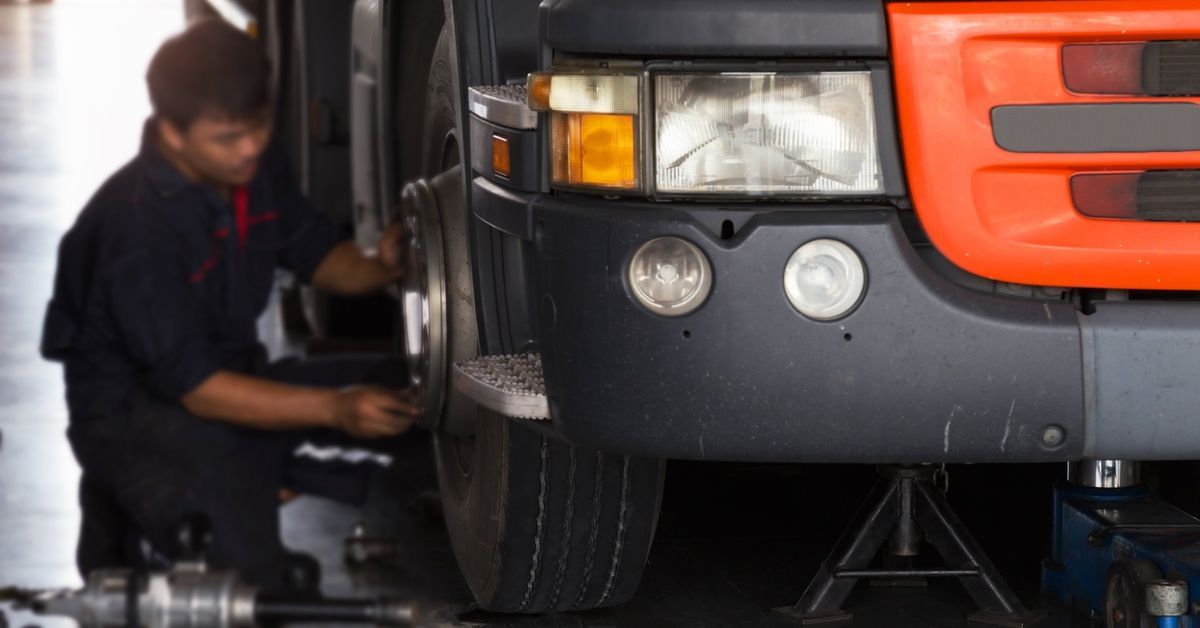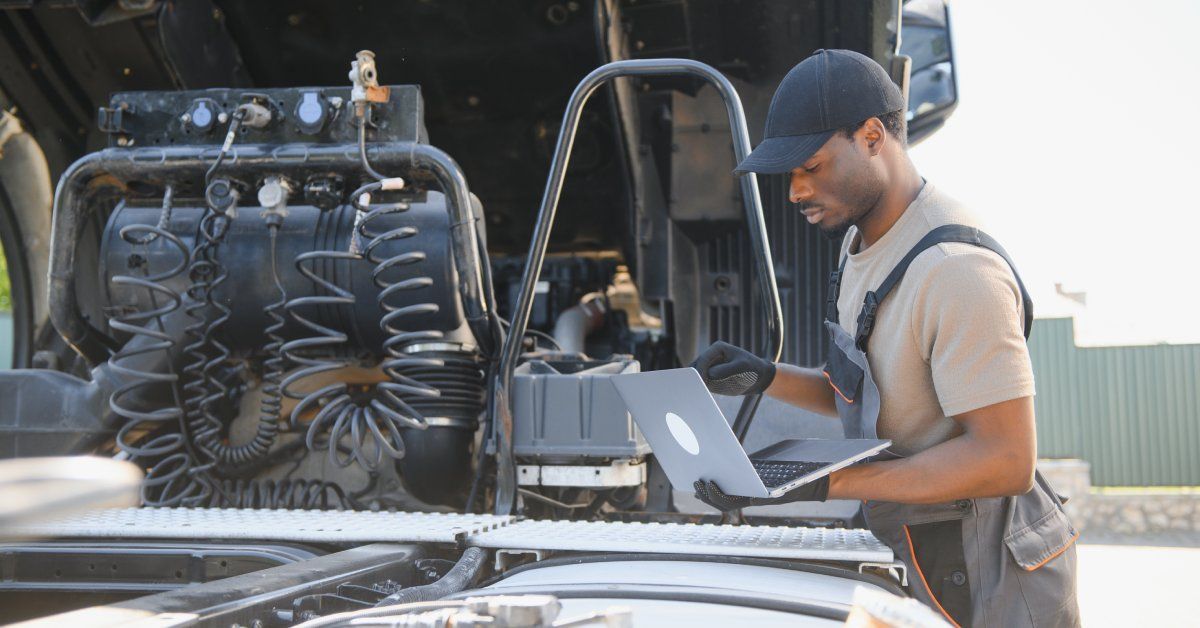Preparing Your Fleet for DOT Inspections: Best Practices
Are your vehicles and drivers ready to pass a DOT inspection with flying colors? With all of the standards and regulations to keep in mind, maintaining compliance can feel like navigating a maze. But did you know it doesn't have to be overwhelming?
We understand the stakes involved with these inspections, like ensuring safety, avoiding fines, and smooth operations. To take some of the stress off your shoulders, we'll walk you through practical, actionable steps to prepare your fleet for DOT inspections so you can handle the process with confidence.
Perform Regular Vehicle Maintenance
Staying ahead of DOT inspections begins with routine vehicle maintenance. Ensuring your vehicles are in top condition not only keeps your fleet compliant but also prevents costly breakdowns down the road. Conduct regular checks on critical components like brakes, tires, lights, and steering systems.
Pay special attention to the condition of your vehicle's undercarriage and exhaust system, as these can often go unnoticed but are closely examined during inspections. Using a preventative maintenance schedule is a great way to keep on top of these tasks.

Keep Maintenance Records Organized
Even if your vehicles are in excellent condition, disorganized maintenance records can raise red flags during an inspection. Inspectors want to see a clear and detailed history of repairs, inspections, and regular servicing for each vehicle. Consider investing in fleet management software or a digital logbook to streamline this process.
These tools can track servicing dates, set reminders for upcoming maintenance, and store all records in one accessible location. Whether digital or physical, your records should always be up-to-date, accurate, and ready to present upon request.
Train Drivers on Inspection Expectations
Your drivers are on the front lines of the inspection process, which makes their training crucial. Educate your team on what to expect during a DOT inspection, including the types of questions inspectors might ask and documents they need to provide. Drivers should also understand how to conduct a proper pre-trip and post-trip inspection, as this is a requirement and a key task to identify potential issues before they become major problems.
Role-playing scenarios or mock inspections can also help prepare your drivers to handle these situations confidently. Remember, a well-trained driver can make all the difference between a smooth inspection and a stressful one.
Ensure Compliance With Weight and Load Limits
One of the fastest ways to raise an inspector's eyebrows is by exceeding weight and load limits. Overloading doesn’t just violate regulations; it can also lead to dangerous situations, putting your drivers and the public at risk.
Equip your vehicles with onboard scales or require regular checks at weigh stations to ensure compliance. Additionally, educate your drivers and loading staff on proper weight distribution techniques to avoid uneven loads, which can cause unnecessary wear on the vehicle.
Verify Driver Documentation
Before any trip begins, confirm that all driver documentation is accurate, up-to-date, and compliant with regulatory requirements. This includes a valid commercial driver’s license, medical certificates, and any endorsements relevant to the type of load being transported.
Make sure any permits required for specific routes or oversized loads are in order as well. A quick checklist can streamline this process and help prevent costly delays or fines due to missing paperwork.
Use Electronic Logging Devices (ELDs)
Leverage the benefits of Electronic Logging Devices (ELDs) to stay compliant with hours-of-service (HOS) regulations. These devices automate the tracking of driving hours, reducing errors often found in manual logs.
ELDs also provide real-time feedback on driving patterns, speed, and idle times, offering opportunities to improve efficiency and reduce fuel consumption. Ensure your drivers are well-trained on using ELDs, and set up alerts or reminders for periodic system updates to keep them running smoothly.
Inspect Key Vehicle Components Before Trips
A pre-trip inspection is non-negotiable for maintaining safety and avoiding unexpected breakdowns. Key components to check include tires, brakes, steering mechanisms, lights, and fluid levels. Inspect tires for proper pressure and wear, as improperly inflated or worn-out tires are both unsafe and inefficient.
You should also test the brakes for responsiveness, and check the fluid levels, such as the oil, coolant, and windshield washer fluid, to see if they need to be refilled. Documenting these inspections can also serve as a valuable reference in case of audits and future maintenance planning.
Ensure Proper Registration and Licensing
Keeping all vehicles properly registered and licensed is not just a legal requirement but also a fundamental step in fleet management. Make it a habit to verify that all vehicles in your fleet have up-to-date registrations, titles, and licenses.
This includes regularly renewing commercial vehicle registrations, ensuring compliance with state and federal regulations, and maintaining records for easy access during audits. Don’t overlook driver-specific requirements either. Confirm that all operators hold valid, current licenses with appropriate endorsements for the vehicles they operate.

Maintain a Clean and Organized Fleet
A clean and organized fleet speaks volumes about professionalism and efficiency. Clean vehicles not only reflect a positive brand image but also help prolong the lifespan of essential components by preventing the buildup of dirt, grime, and corrosion.
Set regular cleaning schedules for both the interior and exterior of vehicles and encourage drivers to keep their vehicles clean. Establishing designated spaces for tools, equipment, and paperwork within the vehicles ensures that drivers can find what they need quickly, reducing downtime.
Monitor CSA Scores Regularly
Your fleet’s Compliance, Safety, Accountability (CSA) score is a critical metric that affects your operation’s reputation and eligibility for work. Regularly monitoring these scores through the Federal Motor Carrier Safety Administration (FMCSA) portal allows you to identify and address issues proactively.
Analyze potential problem areas such as hours-of-service violations, unsafe driving reports, or maintenance citations. Use this information to implement targeted training sessions for drivers and refine your maintenance schedules. Remember, staying ahead of issues not only improves your CSA score but also minimizes the likelihood of inspections and penalties.
Review and Prepare Documentation
Keeping thorough and organized documentation is essential for smooth operations. Start by ensuring that all inspection records, maintenance logs, and driver files are up-to-date and compliant with legal standards. Use a secure, centralized system, whether physical or digital, to store and manage these files, ensuring easy access during audits or inspections.
Standardize forms and procedures to avoid inconsistencies, and consider conducting regular internal audits to catch any gaps. Being diligent with documentation not only enhances compliance but also helps in tracking trends, identifying areas for improvement, and making well-informed operational decisions.
With this guide, you can prepare your fleet for DOT inspections and maintain smooth operations without unnecessary stress. Remember, ensuring that your vehicles are in top condition starts with sourcing quality parts and equipment. If you're searching for reliable trailer parts in Lubbock, Texas, look no further than Trailer Tech. We're committed to providing top-quality solutions to keep your fleet inspection-ready.










